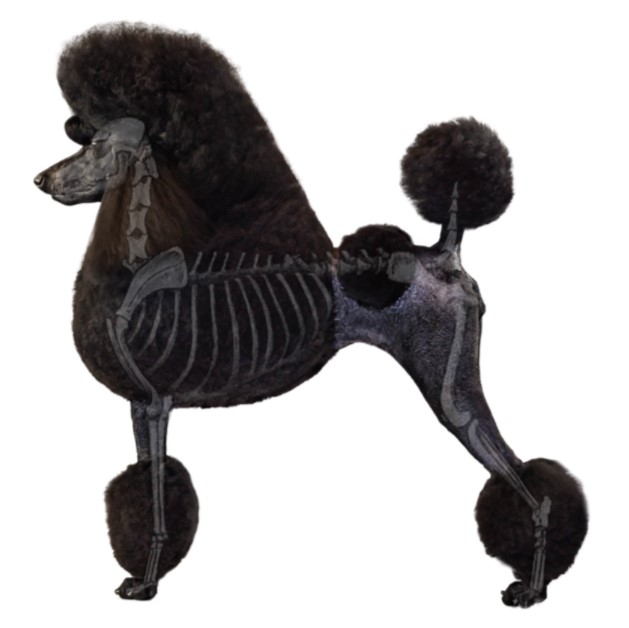It’s not just “to dock, or not to dock” when it comes to Solid Color Poodles
When someone asks me for a poodle with a natural tail, I know the issue is bigger than just tails. The real red flag isn’t whether the tail is docked or not—it’s that someone might be breeding dogs without truly understanding what they’re doing. You wouldn’t buy a house built by someone who didn’t follow building codes, right? The same goes for dogs. Breeding without knowledge, or by convenience, isn’t just risky—it’s irresponsible. Worse, some breeders are now using their lack of effort or investment—skipping docking or dew claw removal altogether—as a marketing tactic, framing it as an ethical decision when it’s really about convenience or saving money. It’s the same mindset as sending puppies home at 8 weeks because it’s easier and less expense, even though the research supports waiting until 10 weeks for better behavioral development. And yet, these same breeders proudly claim to follow Puppy Culture or Avidog—as if those names alone excuse the shortcuts.
Let’s start with the tail: honestly, it’s the least of my concerns. Docking in poodles is done when the puppies are just a few days old—before their neurological systems are fully developed. I’ve watched it happen. Most pups don’t even squirm. It’s quick, clean, and far from traumatic when done by a competent vet. What concerns me far more is when people base their entire decision on one tiny aspect—like tails—without looking at the whole picture.
Take dew claws. I’ve had to deal with torn dew claws three times. That’s not a minor injury—it’s painful, messy, and avoidable. My orthopedic vet, who is well respected in the field, says there’s no good evidence that removing dew claws increases injury risk later in life. In fact, in my real-world experience, not removing them caused far more problems.
What people need to understand is this: breeding isn’t about personal preferences or what’s trendy. It’s about structure, health, temperament, and genetics. Too many “hobby breeders” (because no one likes to say “backyard breeder”) don’t even know what correct structure looks like in a poodle, or how to read a pedigree. That’s like making a major health decision without knowing your family history. You’re gambling with lives—and it’s the dogs that pay the price. And it’s the owners who are left heartbroken, financially burdened, or emotionally drained when things go wrong.

And it’s not just tails and dew claws. These hobby breeders often ignore the breed standard entirely. They chase trends like “rare colors” or buzzwords like “teacup,” “royal,” or “moyen” without understanding the long-term impact they’re having on the breed. Using the word “moyen” might annoy purists, but what’s far more damaging is when people actually breed dogs outside the size standard—whether they’re too small or too large—and act like it doesn’t matter. The poodle standard exists for a reason. It’s there to preserve type, function, and consistency. Straying from it because you think the standard is “too rigid” or “old-fashioned”, or there is a market for ‘bigger’ or ‘smaller’ standards, shows a fundamental misunderstanding of the purpose behind the breed standard.
The truth? Breeders who know their stuff will dock tails because that’s the expectation for the U.S. show ring. Showing isn’t just for prestige—it’s proof. It’s how structure and breed standard are evaluated by experts. Titles and ribbons aren’t for bragging rights—they’re validation that a dog meets the highest standards. And a dog with passing hips and eyes is just the beginning. Without a full understanding of the whole dog, you’re only scratching the surface.
I genuinely look forward to the day when natural tails are the norm in the ring, because when that happens, you’ll see top breeders keeping them. But until then, docking remains the standard in serious circles.
If you’re buying a poodle—or breeding one—ask real questions. Ask where their knowledge came from. Who mentored them? What proof do they have their dogs are sound? Don’t let a single issue like tail docking distract you from the bigger picture: the health, structure, and legacy of the breed.
I support a holistic approach to breeding—one that’s informed, thoughtful, and guided by experience, not trends.
Recent Comments